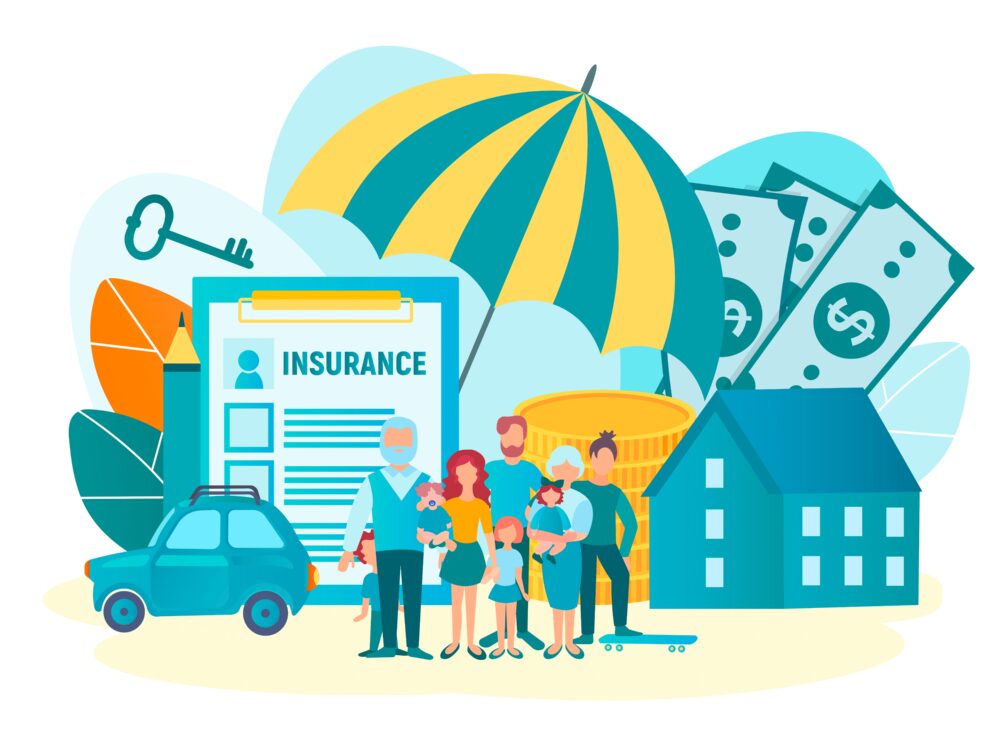Loan planning isn’t just about borrowing—it’s about structuring debt to strengthen your finances. Our Qualified Financial Advisor helps you balance EMIs, interest costs, and cash flow so every loan supports your long-term stability.
When it comes to managing finances, it’s important to understand the difference between good and bad liabilities.
Liabilities are obligations that an individual owes to others. They can impact your financial health, both positively and negatively.
In this article, we’ll define liabilities, explore the types of liabilities, and explain how liabilities affect financial statements. We’ll also discuss good liabilities, bad liabilities, and strategies for managing them.
Defining Liabilities
Liabilities are financial obligations that individuals owe to others. Simply put, a liability is a debt. A liability can arise from a variety of situations, such as taking out a loan or credit card debt, or even something as simple as owing money to a friend or family member.
It is important to understand liabilities because they can have a significant impact on an individual’s financial health.
Liabilities are recorded on the balance sheet of a financial statement, along with assets and equity. This balance sheet provides a snapshot of an individual’s financial position at a specific point in time. The liabilities section of the balance sheet shows the amount of debt that is owed and the terms of repayment.
Types of Liabilities
There are several types of liabilities, each with their own unique characteristics:
- Notes Payable: This is a written promise to pay a specified amount within a specified time frame. Notes payable can be used to borrow money from individuals or financial institutions.
- Loans Payable: This refers to funds borrowed from a bank or financial institution. Loans can be used for a variety of purposes, such as purchasing cars, equipment or expanding a business.
- Mortgages Payable: This refers to funds borrowed to purchase real estate. Mortgages are typically long-term loans with a fixed interest rate and a set repayment schedule.
- Accrued Expenses: Accrued expenses play a crucial role in personal finance, representing the costs you’ve incurred but haven’t settled yet. Imagine this scenario: You’ve received services or utilised products, but the payment is pending. That unpaid amount becomes an accrued expense.
- Unearned Revenues: Unearned revenues are a crucial aspect of personal finance, representing the money you’ve received for goods or services that haven’t been delivered or provided yet. Picture this scenario: You receive payment in advance for a service you’ll offer in the future. The amount received becomes unearned revenue until you fulfill your end of the
How Liabilities Affect Financial Statements
Liabilities may hurt an individual’s finances. If obligations surpass assets, a person is in financial trouble. Debt exceeds assets. However, well-managed obligations can improve credit scores and funding.
Liabilities can be good. Debt can really be good. An individual may borrow money to buy new equipment to boost production and profits. Debt may be a good investment if paid on schedule.
Individuals must comprehend their liabilities. Knowing the types of liabilities and how they affect financial statements helps people acquire and manage debt.
Good Liabilities
While the word “liability” often conjures up negative connotations, not all liabilities are bad. In fact, some liabilities can have a positive impact on your financial health. Let’s explore what we mean by “good liabilities.”
It is important to note that liabilities are not inherently good or bad. Rather, it is how they are managed that determines their impact on your financial health. Good liabilities are investments in your future financial health. They typically come with a low-interest rate and a long-term benefit.
Characteristics of Good Liabilities
Good liabilities typically have the following characteristics:
- Low-interest rate
- Long-term horizon
- Asset-generating
Low-interest rates mean that the cost of borrowing is low, which can help you save money in the long run. A long-term horizon means that the benefit of the liability will be realised over a longer period of time, which can lead to greater financial stability. Asset-generating liabilities are those that lead to the creation of assets, such as a house or a degree, which can appreciate in value over time.
Examples of Good Liabilities
Examples of good liabilities include:
- Student loans: Investing in higher education can lead to higher-paying jobs and increased earning potential. Additionally, some student loans offer flexible repayment options and low-interest rates.
- Small business loans: Investing in a business can lead to increased income and long-term benefits. Small business loans often come with lower interest rates than other types of loans.
- Mortgages: Investing in real estate can build wealth over the long-term. Mortgages typically have lower interest rates than other types of loans and can lead to the creation of a valuable asset.
- Low-interest credit cards: Investing in smart purchases and paying them off in a timely manner can improve credit scores and access to financing. Some credit cards offer low-interest rates for a limited time, which can help you save money on interest charges.
How Good Liabilities Benefit Your Financial Health
Good liabilities, carefully managed, can lead to increased financial health in the future by generating assets and improving credit scores. For example, buying a house through a mortgage can lead to a long-term asset like real estate. The investment can appreciate over time, leading to long-term financial wealth. Similarly, student loans that allow you to get a degree in a high-paying field can lead to a lifetime of higher earnings. Good liabilities, when managed wisely, can increase the potential for a financially secure future.
It is important to note that not all liabilities are good for everyone. It is important to carefully consider your own financial situation and goals before taking on any type of liability. Additionally, it is important to manage liabilities responsibly by making payments on time and avoiding taking on too much debt.
Bad Liabilities
Not all liabilities are created equal. Some can have a negative impact on your financial health. These are known as “bad liabilities.” Let’s explore what we mean by this.
Bad liabilities can cause significant financial problems. They are obligations that don’t generate assets, come with high-interest rates, and have a short-term horizon. The interest usually accrues quickly, and the associated debt can accumulate rapidly. Bad liabilities typically have the following characteristics:
- High-interest rates
- Short-term horizon
- No asset generation
It’s important to understand the characteristics of bad liabilities so that you can avoid them and prevent long-term financial damage.
Examples of Bad Liabilities
Examples of bad liabilities include:
- High-interest credit card debt: Credit card debt can have a high-interest rate and accumulate rapidly if not paid off quickly
- Payday loans: Short-term loans come with high-interest rates that can quickly accumulate
- Car loans: Borrowing money for a car can lead to a depreciating asset and high-interest payments
These examples illustrate how bad liabilities can impact your financial health. For example, high-interest credit card debt can quickly spiral out of control if it’s not paid off quickly. Payday loans can also be problematic because they come with high-interest rates and short-term repayment periods. Car loans can lead to high-interest payments and a depreciating asset, which can hurt your overall financial health.
How Bad Liabilities Harm Your Financial Health
Liabilities can hurt your finances. Credit card debt’s high interest rates can create a cycle of debt that’s hard to pay off. Bad liabilities might also lower your credit score, making borrowing harder.
Manage and reduce poor liabilities to avoid long-term financial impact. This includes paying off high-interest debt promptly, avoiding short-term loans with high interest rates, and being cautious when borrowing for depreciating assets like vehicles.
Understanding negative liabilities and minimising them might help you establish a secure financial future.
Managing Liabilities
Liabilities are a crucial aspect of personal finance, and managing them properly is essential to achieving financial stability. Now that we’ve explored both good and bad liabilities, let’s discuss strategies for managing them.
Strategies for Reducing Bad Liabilities
In order to manage bad liabilities, it’s important to reduce them as much as possible. This can be achieved through:
- Paying off credit card debt as quickly as possible: Credit card debt is notorious for its high interest rates, which can quickly spiral out of control. Paying off your credit card debt as quickly as possible can help you avoid accumulating unnecessary interest charges and improve your credit score.
- Avoiding payday loans: Payday loans may seem like a quick fix for short-term financial needs, but they often come with exorbitant interest rates and fees. Avoiding payday loans can help you avoid falling into a debt trap.
- Borrowing conservatively: When taking on debt, it’s important to borrow conservatively and only take on debt that you can realistically pay back. This can help you avoid taking on too much debt and potentially damaging your credit score.
Balancing Good and Bad Liabilities
Balancing good and bad liabilities is critical while minimising bad liabilities. You may build long-term wealth by investing in excellent liabilities like school loans or mortgages. However, excessive debt might harm your finances. Find a balance that suits your finances.
For instance, a mortgage can help you develop equity and boost your net worth. However, too much home debt can cause financial difficulty and foreclosure.
Monitoring Your Liabilities Over Time
Finally, monitoring your liabilities is crucial to managing them. Checking your credit report and financial papers regularly might help you see possible issues and take action to improve your finances.
Reassessing your liabilities frequently ensures they still match your financial goals and priorities. If you took on student loan debt to pursue a job but later changed careers, you may need to adapt your liability management strategy.
Liability management involves constant attention and preparation. You may secure your financial future by controlling your responsibilities proactively.
Conclusion
Liabilities are an important part of overall financial health. By understanding the difference between good and bad liabilities and effectively managing them, you can create a solid foundation for your financial future.








